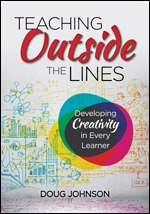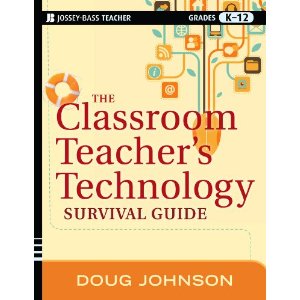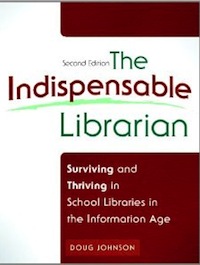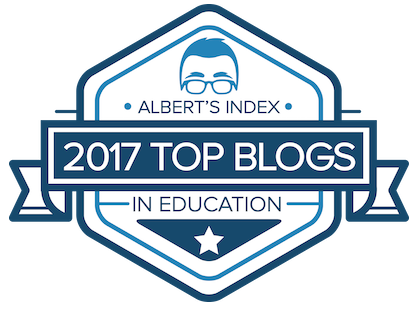Forecasting Trends
 Thursday, January 25, 2007 at 09:04AM
Thursday, January 25, 2007 at 09:04AM Bite off more than you can chew, then chew it.
Plan more than you can do, then do it.
- Anon.
In response to an earlier comment I made, Peter Reilly over at the terrific Ed Tech Journeys blog sent me this link to his wiki page that predicts some of the elements to consider in an updated planning model:
- The role of online learning both for teachers and students.
- The ability to provide home access to school resources, 24x7x7.
- The need to provide a structured plan for the acquisition of software and digital content.
- The emerging role of data in decision making.(warehousing & SIF)
- Unified desktops (portals) that aggregate appropriate resources and allow single log ons to multiple applications.
- Lower computer costs making "one to one" more feasible.
- WiMax and meshed WiFi making the school network accessible from home.
- A new emphasis on innovative Leadership to inspire change in teaching and learning.
- New networking strategies including "virtualization" and "remote support" that lower support costs and allow re-allocation of resources to "one to one" iniatives.
- Inclusion of students in the planning process and as a resource in implementing the plan.
- Identifying whether you are a candidate to move to Open Source software.

In The Vision Thing earlier blog entry, I talked about the big picture of tech planning. Here is the more granular part of our draft tech plan that is being distributed throughout the district for comment. I am pleased that so much of it addresses Peter's "elements":
Directions – 2007-2011 (These actually changed little since the 2003-07 plan.)
As quickly as technology changes, it is nearly impossible to predict or plan with any accuracy the specific challenges that will be facing us over the next few years. We can speculate on some general trends:
- Less emphasis on “technology’ as a separate area of concern; more emphasis on technology as a means to achieve goals of other areas.
- Greater need to train students and staff on ethics, safety and civility when using technology, as well as the ability to evaluate the reliability of information found and to use it purposely.
- Need for formal integration of technology skills into the content areas to meet specific state standards as well as being able to meet NCLB requirements that all students be technologically literate by the end of eighth grade.
- Increased demand for individualized technology training by staff.
- Continued, accelerated move to information in digital formats such as e-books, online databases, electronically submitted student work, web-based video conferencing, and video on demand.
- More emphasis on anytime, anyplace access to personal information through web-based personal file space, calendars, and wirelessly networked hand-held devices. Increased access to tools that allow teachers to supplement classroom instruction with online learning opportunities such as class chats, threaded discussion groups, online syllabi and study materials, collaborative workspaces, etc.
- Increased desire by parents for real-time student information available via the web. Higher parent expectations of schools and teachers to provide comprehensive information about school programs and individual student achievement.
- Continued importance of the tools and knowledge needed to do good data-driven decision-making by administrators, building teams and individual teachers.
- Increased efforts to assure data privacy, data security, and network reliability.
- Increased educational options for all learners including more choices of schools, more online course offerings, more interactive video offerings, and more computer courseware options. This will result in an increased need for school marketing efforts and increased “consumer-driven” attention..
Big tasks 2007-2011
- Continue/finish SmartClassroom project, installing interactive whiteboards and mounted LCD projectors in each classroom along with teacher training necessary to use them.
- Explore use and need for voice enhancement systems in classrooms.
- Refine regular replacement/training schedule for all staff, including secondary. Do needs assessment of staff development in technology.
- Implement secure wireless network.
- Evaluate current student information system and related programs (grade book, parent interface, class management).
- Monitor feasibility of 1:1 student to computer programs using computers designed specifically for student use.
- Supply additional computers and support for online testing required by district and state.
- With assessment department, support training for all staff in using data mining system.
- Create assessment of 8th or 9th students of technology skills. Design remediation opportunities for those who lack technology skills.
- Move all web materials and services to ASP (rSchools). Train all teachers in use of rSchools for use in placing teaching materials online.
- Refine and develop security procedures. Do regular external and internal security audits.
- Upgrade building networks by replacing 100mg switches with 1 gig switches.
- Explore updating of library circ/cat system.
- Develop and implement comprehensive new staff training programs for teachers, administrators and support staff.
Our bright, young IT manager, Jim, adds these to the list:
- Consolidate server resources and provide thin-client (virtualization) appliances to accommodate increased needs of online testing.
- Develop and integrate course management systems (CMS) within the curriculum and foster online courses.
- Develop a true “web portal” for access to all systems (student info system, online storage, email, etc…)
- Similar to #2, use a CMS type system or facilitate new forms of communication between students, teachers, and experts by using technology and the internet interactively in the classroom.











